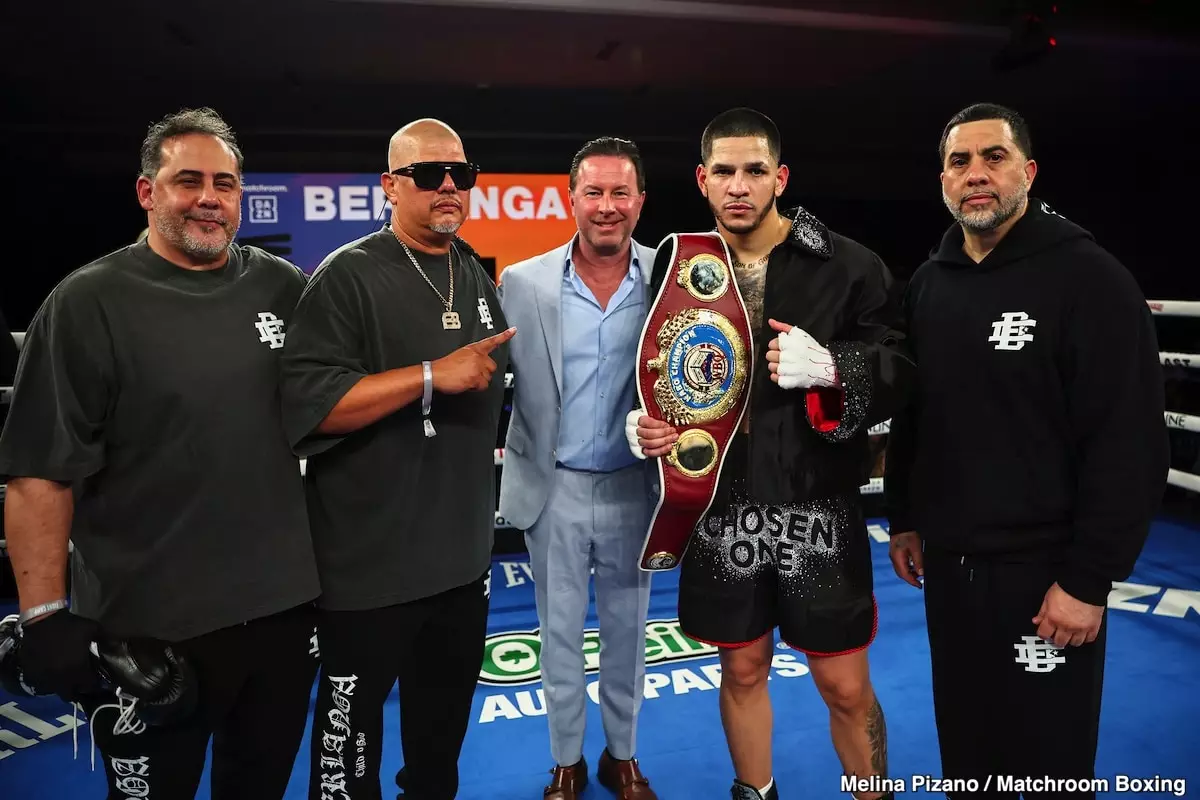In a distinctive maneuver, Ring Magazine has shaped an upcoming boxing event on July 12th in New York City by organizing two co-feature bouts. The matches feature rising talents: Edgar Berlanga against Hamzah Sheeraz, complemented by Shakur Stevenson’s contest with William Zepeda. In an unusual twist, Ring Magazine has opted to label Stevenson-Zepeda as the main attraction throughout the fight week, while the fight night leans towards Berlanga-Sheeraz as the headline bout. This unconventional setup has ignited a flurry of speculation regarding the rationale behind such a strategic decision.
Traditionally, fans expect the fight labeled as the main event to be the show-stopper, but the current arrangement risks leaving audiences in a state of confusion. Despite the pre-fight promotional strategies attempting to elevate Stevenson’s matchup, the selection of Berlanga and Sheeraz as the ultimate headliners raises eyebrows. Considering the combatants’ records—Berlanga standing at 23-1 with 18 knockouts and Sheeraz at 21-0-1 with 17 knockouts—their resumes lack the significant achievements often seen in main event fighters, leading to perceptions of them as fabricated entities more focused on marketability than merit.
Your Turn to Entertain: The Weight of Expectations
Fans attending the event or watching from their homes undoubtedly arrive with sets of expectations. Historically, the main event is reserved for the top-tier talent, and these bouts often feature athletes with a track record of thrilling performances and notable victories. However, Berlanga and Sheeraz, often criticized for lacking depth in their fight histories, may struggle to engage an audience eager for electrifying matchups. It seems Ring Magazine is banking on the idea that by placing a spotlight on Stevenson-Zepeda through media promotions, the event will still attract an enthusiastic audience.
This gamble raises philosophical questions about the role of marketing in sports: does a boxing label take precedence over raw ability? If a fight is marketed as significant, can it, in some way, transform into what fans expect? The belief that America’s audience is likely to gravitate towards purchasing the pay-per-view event simply due to marketing strategies poses both ethical and practical dilemmas. By diverting attention towards the less skilled fighters, the integrity of boxing is put at stake, as hardcore fans might feel manipulated by a diluted narrative.
The Business of Boxing: Is Perception Reality?
The delineation between hype and substance in boxing is a fine line, often walked perilously. The decision to brand Stevenson-Zepeda as the event’s main feature while relegating Berlanga-Sheeraz to close the show could simply be a calculated risk to maximize pay-per-view sales on DAZN. Marketing tactics that shape viewers’ perceptions can be effective—but at what cost? Should fans merely be fed a mirage or manipulated via marketing gloss, or should they be afforded clarity about the true stakes and talents competing?
In an era dominated by media narratives, it’s entirely possible that perception can become a reality for events like these. However, each bout still has to deliver in the ring. The contrast in talent and legacy begs for introspection: Can such promotional acrobatics drive genuine excitement, or will they only challenge the loyalty of fans searching for authenticity? Only time will tell how this curious fighter lineup will unfold, challenging everyone’s understanding of what constitutes an engaging boxing spectacle.


Leave a Reply